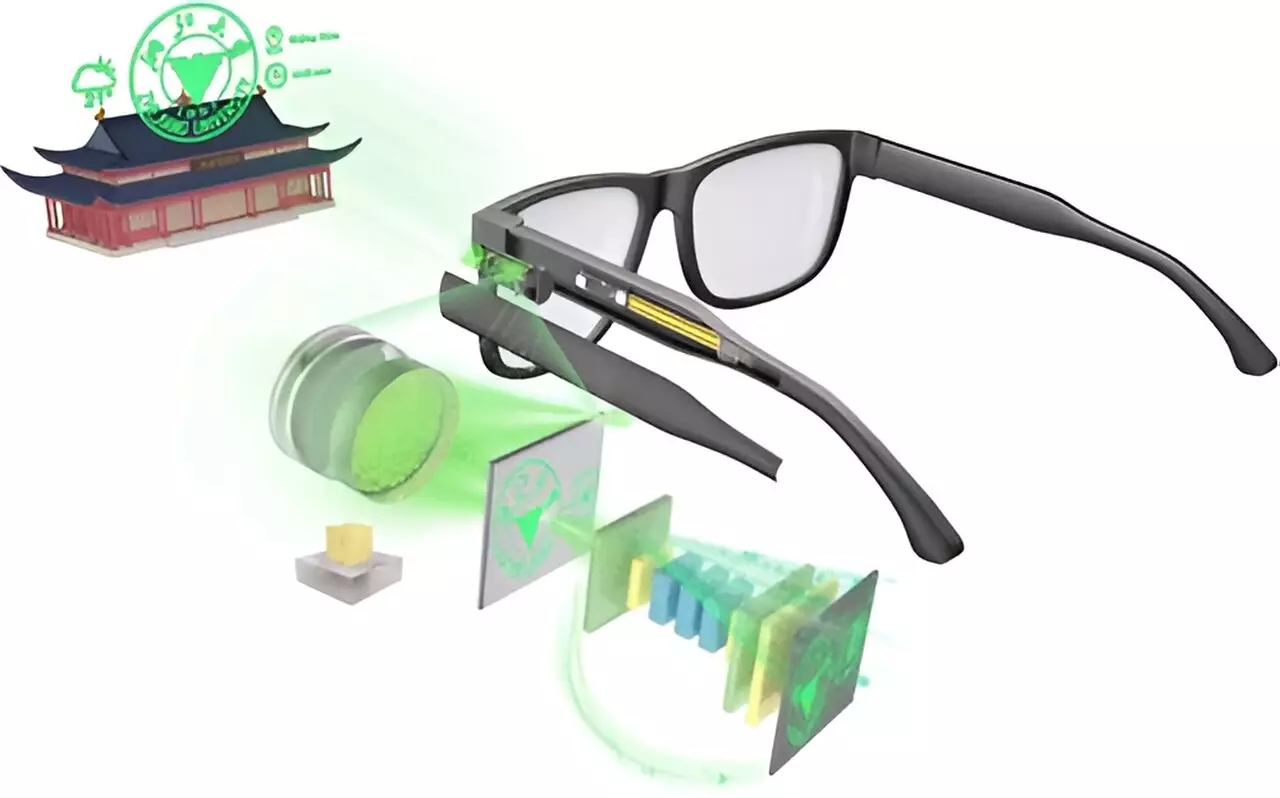Augmented reality (AR) represents a significant leap in how we interact with the world around us. By layering digital information onto our physical environment, AR creates an immersive experience where real and virtual elements coexist. Its applications extend beyond entertainment, reaching into critical sectors such as healthcare, where it can enhance surgical precision, and the automotive industry, where it can facilitate the development of self-driving vehicles. This versatility highlights AR’s potential to redefine our daily experiences.
Despite the exciting prospects of AR, its current implementations often come with substantial drawbacks. Most AR systems, such as those used in virtual gaming headsets or car dashboard displays, are encumbered by bulky hardware that limits usability and comfort. Traditional AR setups typically require multiple lenses to achieve a high-quality image, which can complicate design and diminish user experience. The complex arrangement of technological components can result in reduced image clarity and a narrow field of view, issues that have long inhibited widespread adoption of AR technologies.
Recent advancements offer promising solutions to these persistent challenges. Researchers, led by Youguang Ma, have made strides by merging two optical technologies into a streamlined, high-resolution AR display system. This innovative design employs a hybrid model that combines a metasurface—an ultrathin, precisely patterned silicon film—and a refractive lens, integrated with a microLED display. The metasurface serves a crucial role: it shapes and directs light from the microLEDs more efficiently than standard lenses, leading to clearer image projection.
The engineering behind this compact system is noteworthy. By etching specific patterns into the silicon nitride film, light is manipulated in a way that significantly enhances both the sharpness and depth of the images projected. The refractive lens, crafted from synthetic polymer, further refines this output by minimizing optical aberrations, which can distort the viewer’s perception of the augmented imagery.
Performance metrics indicate that Ma and his team have achieved impressive results. Testing of the prototype demonstrated less than 2% distortion within a substantial 30-degree field of view—a remarkable achievement considering most commercial platforms equipped with four lenses often struggle with greater distortion rates. Furthermore, utilizing advanced computer algorithms, the researchers enhanced the fidelity of the images by correcting systemic flaws before they reached the viewer’s eye. One compelling example of this enhancement is a projected image of a red panda, which exhibited a 74.3% structural similarity to the original, a significant 4% improvement over its uncorrected counterpart.
The implications of these breakthroughs are immense. As the research team envisions future iterations of this AR display technology, the potential to transition from monochromatic projections to full-color images appears attainable. Such advancements could pave the way for the next generation of mainstream AR glasses, making sophisticated augmented experiences more accessible and practical for everyday use. As AR continues to evolve, its integration into daily life seems increasingly inevitable, marking the dawn of a new technological frontier.


Leave a Reply